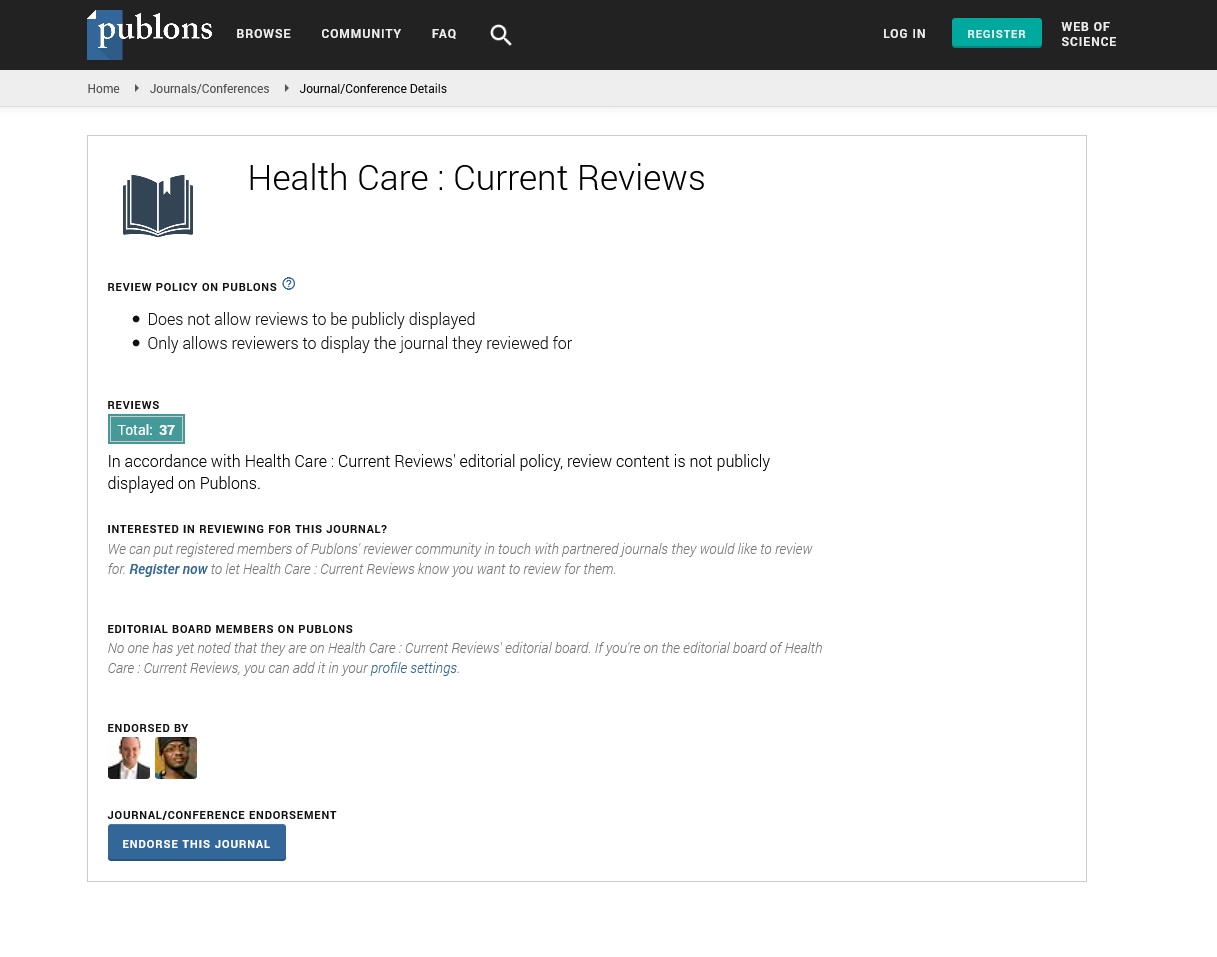Indexed In
- Open J Gate
- Academic Keys
- RefSeek
- Hamdard University
- EBSCO A-Z
- Publons
- Geneva Foundation for Medical Education and Research
- Google Scholar
Useful Links
Share This Page
Journal Flyer

Open Access Journals
- Agri and Aquaculture
- Biochemistry
- Bioinformatics & Systems Biology
- Business & Management
- Chemistry
- Clinical Sciences
- Engineering
- Food & Nutrition
- General Science
- Genetics & Molecular Biology
- Immunology & Microbiology
- Medical Sciences
- Neuroscience & Psychology
- Nursing & Health Care
- Pharmaceutical Sciences
Regulation of muscle contraction and how mutations in the muscle protein causes heart disease. The laboratory techniques Involves molecular biology, protein expression, purification and characterization using biochemical and biophysical techniques
10th International Conference on Mental Health and Psychiatry & 11th World Summit on Neonatal Nursing and Health Care
May 20, 2025 | Webinar
Ugochukwu O Maluze
University of Sydney, Australia
Scientific Tracks Abstracts: Health Care Curr Re
Abstract:
Introduction: The expansion of causative mutations to the rigid thin filament changed the description of hypertrophic cardiomyopathy (HCM) from an illness of the cardiac motor to a syndrome of the cardiac sarcomere and significantly extended the gasp of the potential molecular pathogenic mechanism. An interesting hypothesis concerning disease mechanism posted that the diverse medical prognoses in the familial type of HCM may possibly be related to mutations in self-regulating protein machinery of the sarcomere. The journal of the novel study in 1990 establishes the inherited association of the beta-myosin and tropomyosin heavy chain genetic material to familial type of hypertrophic cardiomyopathy (HCM). The current studies conducted by some researchers elaborated on the various genetic alterations inside the genes encoding for the sarcomere cardiac proteins, alpha tropomyosin, troponin T, and myosin protein components. The regularity of gene alteration in the alpha tropomyosin protein (TPM1) is less, contributing to 5% of FHC. Currently, the D175N gene mutation has been recognized in various unrelated populations, signifying that this spot could be an abnormal gene ‚??hot spot‚?Ě for the disease. The aims and objectives of this project research are to produce a wild type of normal protein and mutant genetic proteins (E180G and D175N) which are clinically involved in familial hyper cardiomyopathy (FHCM). Bearing in mind that the main effect of mutations E180G and D175N are mainly related to the thermal stability of the protein; this research will also investigate the differences between the thermal stability of wild type and mutated protein types using a Dye base fluorescent method of analysis. Methods: (1)Preparation and Storage of Competent XL-1, BL2 and Escherichia Coli Cells applicable to transformation and transfection (2) Tropomyosin Preparation (3) DNA Purification (4) Column Chromatography analysis of tropomyosin (Wild Type Protein) (5) Preparation of mutated Protein (D175N and E180G) (Site Directed Mutagenesis) (6) Column Chromatography analysis of mutated Proteins (7) Measurement of the thermal Stability of Wild Type (Lysozyme) and mutated proteins (D175N and E180G) Using the Dye Base Fluorescent method (8) Media culture of XL1 cells and BL2 on agar media (9) DNA and protein gel electrophoresis (10) Resuspension of protein pellet with Potassium Phosphate. Results: A wild type of normal protein and mutant genetic proteins (E180G and D175N) which are clinically involved in familial hyper cardiomyopathy (FHCM) were produced. The DNA and protein gel electrophoresis was conducted and the presence of the protein on the protein bands was noted, which indicates a high synthesis and purification process. The absorbance of tropomyosin normal protein using spectrophotometer measurements was performed and the molecular weight of the protein was found to be 32797 Da. At 280 nm wavelength, the absorbance of the protein was 0.129, and the protein concentration was found to be 11.64mg/ml. The absorbance of D175N protein using spectrophotometer measurements was conducted and the molecular weight of the protein was found to be 32797 Da. At 280 nm wavelength, the absorbance of the protein was 0.032, and the protein concentration was found to be 5.25mg/ml. The absorbance of E180G protein using spectrophotometer measurements was conducted and the molecular weight of the protein was found to be 32797 Da. At 280 nm wavelength, the absorbance of the protein was 0.031, and the protein concentration was found to be 5.43mg/ml. Thermal denaturation studies of normal tropomyosin and mutant tropomyosin (E180G and D175N) show a cooperative interaction between folding of the N-domain and C-regions of tropomyosin. HCM mutations E180G and D175N prominently destabilized the tropomyosin N-domain, which indirectly affected cooperative interactions between N- and C-terminal regions of tropomyosin. Conclusion: Recombinant human tropomyosin‚??s were produced which serves as a model protein to study the interactions that govern the stability of the thin filament. Two mutations (E180G and D175N) described as causing cardiomyopathy were introduced in the cDNA encoding the human skeletal muscle tropomyosin. Thermal denaturation studies of control and mutant tropomyosin (E180G and D175N) show a cooperative interaction between folding of the N-domain and C-regions of tropomyosin. HCM mutations E180G and D175N prominently destabilized the tropomyosin N-domain, which indirectly affected cooperative interactions between N- and C-terminal regions of tropomyosin. The experimental result on this current study suggested that HCM mutations locally destabilize tropomyosin, leading to an increased thin filament Calcium sensitivity, and the degree of disruption of the tropomyosin interaction by the FHC mutations may be directly correlated with the severity of the disease. For future prospect, future biochemical analysis of several other FHC mutations will be needed to establish a definite correlation between the enzymatic impairment between different mutants and their clinical phenotype of the heart disease.
Biography :
Ugochukwu O. Maluze is an ambitious, dedicated, diligent, self-motivated and hardworking young man with a good career excellence. He had qualifications on bachelor‚??s degree on Medical Laboratory Science (Ebonyi State University Nigeria), and postgraduate qualifications on Biomedical Science (London Metropolitan University, UK), Biomedical Engineering (University of Bedfordshire, UK), Public Health Advanced (Torrens University Australia) and a course on Clinical toxicology (London Metropolitan University, UK). He has published two articles‚?? journals on ‚??‚??Erythrocyte micro vesiculations in health and diseases‚??‚?? and ‚??‚??Risk factors affecting the prevalence of breast cancer among females aged 40-69 years.

